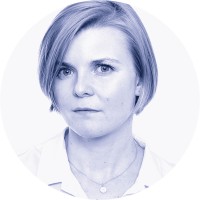Half of all the world’s refugees are children.

Photo: Sturlason
‘Norway needs more children,’ prime minister Erna Solberg said in her New Year’s speech in 2018 (1). On Lesbos, newborn infants are sleeping on the street, and there are more refugees in the world today than there were during the Second World War. Close to 80 million people are refugees, equivalent to one per cent of the world’s population. Nearly 34 million have crossed at least one national border, while nearly 46 million are displaced within their home country as a result of conflict or disaster. Twenty-six million have refugee status according to international law. One-half of these are children (2). Altogether 33 000 children arrived in Southern Europe in 2019. ‘Children need someone to wipe their tears and patch up their wounds’, Solberg continued (1). Nine thousand of the children who arrived in Europe last year came alone or had been separated from their parents during their escape (3).
Against this backdrop, here in Norway we are discussing whether accepting 50 refugees is enough. When the Moria camp burned down, it was a disaster waiting to happen (4). The camp was not constructed, nor intended as a permanent abode for those 13 000 people who were placed there, and the facilities were in no way adequate to handle a pandemic. When an outbreak of COVID-19 happened, the entire camp was placed in quarantine. Doctors Without Borders sounded the alarm that mass quarantine was a dangerous strategy, and they were proven right (5). Shortly after, the camp was ablaze, and desperate people lost what little they had of belongings and shelter. Some argue that the refugees should be helped where they are. It costs less, both economically and politically, at least in the short term. However, keeping people in camps for an indefinite time deprives them of the opportunity for a full life (6). Freedom of movement is a fundamental human right. In children who have been locked up we see anxiety, mental disorders, developmental disorders and impaired physical health (7). Letting people spend years as refugees in camps and reception centres is not only awful for those concerned, it is also inappropriate from a developmental and economic standpoint (8).
Violence or threats of violence are the main reason why people flee (8). The decision to leave behind all that you own and all that you know is taken in a situation of pressure and with incomplete information. ‘Throughout the ages, parents have looked at their newborn child and asked themselves: what kind of future awaits you?’, Solberg said. When fleeing seems the safest solution, this testifies to what they are fleeing from.
‘A good childhood lasts a lifetime,’ Solberg said. A traumatic childhood lasts even longer
Child refugees are especially vulnerable to abuse and violence, and to being sold into slavery and prostitution. This comes on top of the considerable risk of trauma, disease, injury and death that applies to all refugees. ‘A good childhood lasts a lifetime,’ Solberg said (1). A traumatic childhood lasts even longer, since it also produces epigenetic changes to DNA (9), changes that perhaps may explain some of the increased risk of both physical and mental illness (10). Children who are left without their immediate caregivers are especially vulnerable. We cannot dawdle in evacuating children from Moria. Treating refugees inhumanely is not an acceptable method for slowing migration flows.
Norway is among the world’s richest countries, and this comes with responsibilities. Moreover, if we want Norway to be a world leader in peace and conflict resolution, we must help when we can. Values are not what you preach, but how you act. For the second time, the Norwegian Medical Association has appealed to the Minister of Foreign Affairs that ‘Norway should demonstrate international leadership also in the extraordinary situation created by the pandemic’ (11). This is an apt formulation. International leadership means setting the standards for others. For, if Norway fails to help, how can we expect others to?
We cannot dawdle in evacuating the children from Moria
It is autumn in Europe and the nights are cold. The refugee children on Lesbos have nothing, not even a roof over their heads. Do they still have hope? Some of them are alone. ‘It is the children who will take our society further,’ Solberg concluded on the last day of the year, before wishing us a Happy New Year (1).
The table was laid with a shining white tablecloth and the finest china, and a roast goose steamed gloriously, filled with prunes and apples. […] But in the corner, leaning against the wall, the little girl was found dead when the cold morning dawned, she had frozen to death on the last night of the old year (12).